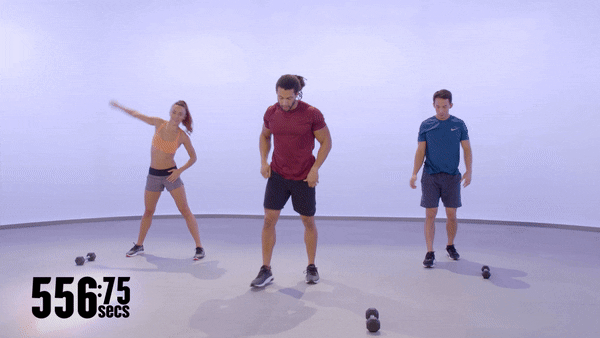Inchworms aren’t notably regarded for his or her core energy — there aren’t any selfies of caterpillars displaying off their 106-pack abs, in spite of everything. However the inchworm train is a strong go-to train whenever you’re seeking to strengthen your core.
Generally known as the walkout train, this low-impact, standing-to-plank-position transfer is common amongst trainers with good motive.
“The inchworm is primarily a core train, however you’ll additionally really feel it in your shoulders, glutes, and hamstrings,” says Trevor Thieme, C.S.C.S., govt director of health and vitamin content material for BODi. “It really works muscle groups throughout your physique.”
Better of all, it may be progressed simply to make it tougher.
Inchworm Train: Step-by-Step Directions
- Stand tall together with your toes hip-width aside and your arms at your sides.
- Holding your core engaged and again flat, hinge ahead at your hips and place each palms on the ground. Bend your knees barely if vital.
- Stroll your palms ahead till you assume a high-plank place. Your wrists needs to be straight beneath your shoulders and your physique needs to be straight from head to heels.
- Reverse the motion, strolling your palms again towards your toes, to return to the beginning place.
What Muscular tissues Does the Inchworm Train Goal?
The inchworm is a compound (multi-joint) train that hits a number of main muscle groups.
Core
It’s important to stabilize your backbone as you bend and stroll your palms ahead, and that lights up your belly and spinal erector muscle groups. These keep engaged as you retain your again and hips in alignment whereas in plank, and proceed to fireplace up as you stroll your palms again.
Arms, shoulders, and chest
As you come into excessive plank — and particularly for those who add a push-up to the sequence (extra on that in a bit) — your pecs, delts, and triceps interact to help and transfer your physique.
Inchworm Variations
The next variations are an effective way to make the inchworm train a part of a dynamic warm-up — it’s a low-impact transfer that not solely engages many main muscle teams, but additionally helps improve mobility and adaptability by working your arms and hips by way of massive ranges of movement.
1. Inchworm push-up
From the high-plank place, decrease your torso till your chest is inside a couple of inches of the ground, after which push again up earlier than returning to standing.
2. Inchworm to low plank
From a excessive plank, decrease your proper forearm to the ground, after which your left. Push again as much as a excessive plank after which return to standing.
3. Inchworm to cobra
From a excessive plank, decrease your torso till your chest is inside a couple of inches of the ground, then press into your palms and carry your chest off the ground utilizing your arm and again muscle groups, creating an arch in your decrease again. Raise your hips as much as return to standing.
4. Inchworm to alternating facet plank
From a excessive plank, transition to a facet plank by shifting your weight onto one arm and rotating your physique to boost the opposite one towards the ceiling. Return to a excessive plank and repeat in your different facet earlier than resuming the inchworm and returning to standing.
5. Inchworm pounce reverse
From high-plank, push your hips again over your toes by bending your knees with out letting your them contact the bottom, retaining your arms prolonged out in entrance of you. Then transfer again to a excessive plank earlier than returning to standing.
6. Inchworm to sumo squat leap
If you return to the beginning place, hop your toes out extensive and carry out a sumo squat, or preserve your toes collectively for a squat jack.

